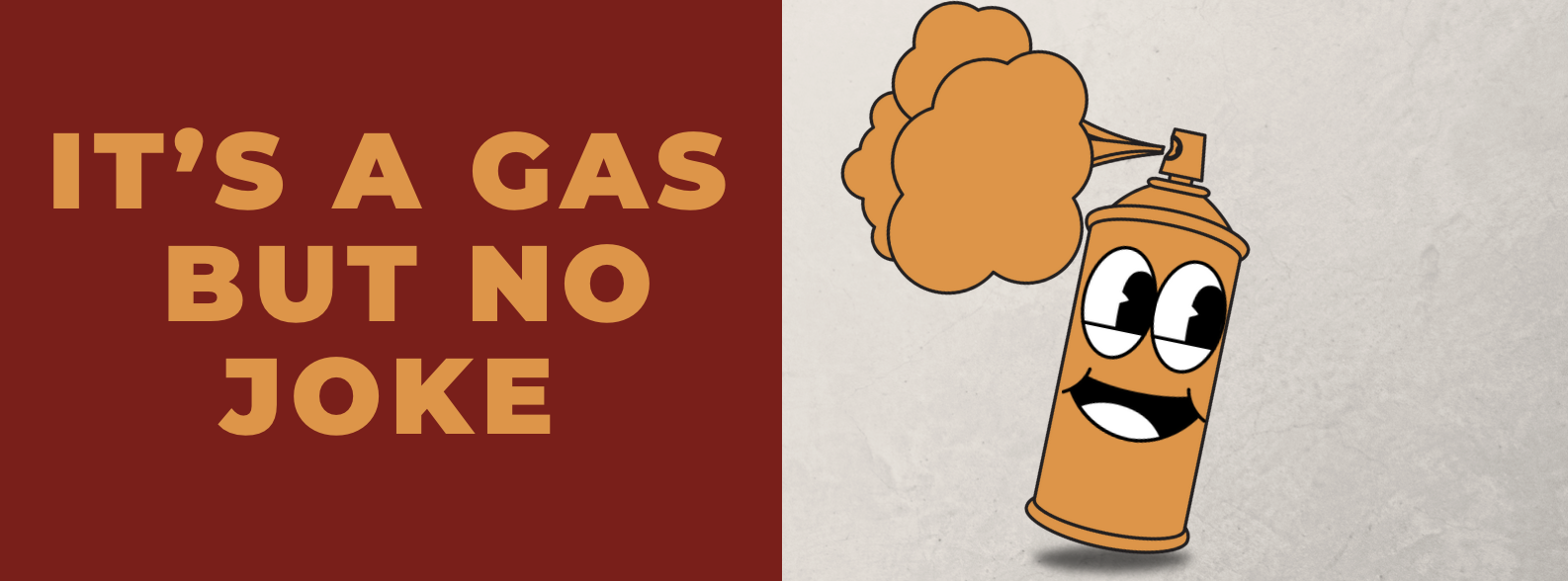Did you hear the one about the gas that thought it was an aerosol?
It had its head in the clouds.
When it comes to aerosol cans of spray paint for tagging and small containers of non-poisonous gas, like butane for refillable lighters, most shippers don’t realize the Department of Transportation’s (DOT), Pipeline and Hazardous Materials Safety Administration (PHMSA) and the airlines have different regulatory requirements.
In most cases, DOT reluctantly will eventually adopt United Nation (UN) Dangerous Good Regulations (DGR) or as I like to say “recommendations” into their 49 CFR Hazardous Material Regulations (HMR). But with aerosols they seem to have dug in their heels. For years if you called the DOT Hotline at 800-467-4922 and you were willing to press them they would admit that 49 CFR 173.306 could be confusing and misleading.
The (PHMSA) has always acknowledged their regulations are not truly harmonized with The United Nations Dangerous Goods Recommendations, (DGR) or the International Air Transport Association (IATA).
The PHMSA (DOT) defines an aerosol in § 171.8 “as an article consisting of any non-refillable receptacle containing a gas compressed, liquefied, or dissolved under pressure, the sole purpose of which is to expel a nonpoisonous (other than a Division 6.1 Packing Group III material) liquid, paste, or powder, and fitted with a self-closing release device allowing the contents to be ejected by the gas.”
The United Nations (UN) Model Regulations define an aerosol “as an article consisting of a non-refillable receptacle containing a gas, compressed, liquefied or dissolved under pressure, with or without a liquid, paste or powder, and fitted with a release device allowing the contents to be ejected as solid or liquid particles in suspension in a gas, as a foam, paste or powder, or in a liquid or gaseous state.”
In the air carrier’s International Air Transport Association (IATA) Recondations a small can of compressed butane gas for a refillable cigarette lighter, is an aerosol. However, DOT does not consider small cans of compressed gas like butane, to be aerosol cans even though they are shipped as Class 2, Division 2.1 and 2.2, Compress Gases under the same exceptions as the aerosol, in DOT Hazardous Material Regulations, (HMR) 49 Code of Federal Regulations (CFR) Section 173.306. Which is authorized when shipping names reference this number in column 8 of the 172.101 hazardous materials table.
Regardless of air or ground, there are other concerns when shipping aerosols as they are restricted in size. Once over the container capacities for aerosol, they are shipped as gases under the shipping name Chemical under pressure, n.o.s..Be aware, under IATA there are more shipping names and hazard class options when shipping these limited quantities by air.
One of the lessons that I’ve learned in my life,
“It’s not what you do, it’s where you are when you do it”.
Robert J Keegan
Hazardous Materials Publishing Company
Transportation Skills Programs Inc
hazmat.tsp@gmail.com
610-587-3978 call or text


